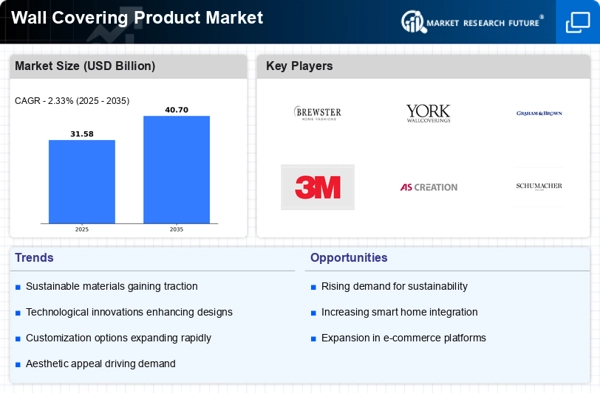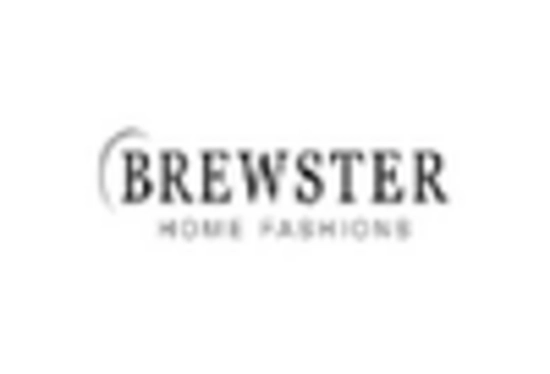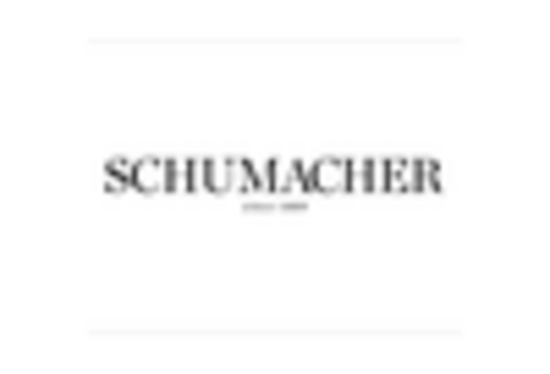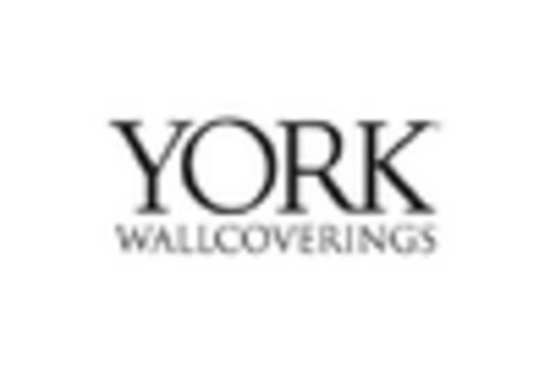The Wall Covering Product Market is currently characterized by a dynamic competitive landscape, driven by innovation, sustainability, and digital transformation. Key players such as Brewster Home Fashions (US), York Wallcoverings (US), and Graham & Brown (GB) are actively shaping the market through strategic initiatives. Brewster Home Fashions (US) has positioned itself as a leader in design innovation, focusing on eco-friendly materials and customizable options, which resonates with the growing consumer demand for sustainable products. Meanwhile, York Wallcoverings (US) emphasizes regional expansion and partnerships, enhancing its distribution channels and market reach. Graham & Brown (GB) is leveraging digital platforms to enhance customer engagement and streamline operations, indicating a shift towards a more integrated online presence. Collectively, these strategies contribute to a moderately fragmented market structure, where innovation and customer-centric approaches are pivotal for competitive advantage.
In terms of business tactics, companies are increasingly localizing manufacturing to reduce lead times and optimize supply chains. This trend is particularly evident in the Wall Covering Product Market, where companies are adapting to regional preferences and regulatory requirements. The competitive structure remains moderately fragmented, with several players vying for market share. However, the influence of key players is significant, as their strategic decisions often set industry standards and trends.
In August 2025, Brewster Home Fashions (US) launched a new line of biodegradable wall coverings, marking a significant step towards sustainability in the industry. This initiative not only aligns with consumer preferences for environmentally friendly products but also positions the company as a pioneer in sustainable wall coverings. The strategic importance of this move lies in its potential to attract eco-conscious consumers and differentiate Brewster from competitors who may not prioritize sustainability.
In September 2025, York Wallcoverings (US) announced a partnership with a leading e-commerce platform to enhance its online sales capabilities. This strategic action is crucial as it allows York to tap into the growing trend of online shopping, particularly in the home decor sector. By improving its digital presence, York aims to reach a broader audience and increase its market share, reflecting a shift towards digital transformation in the industry.
In July 2025, Graham & Brown (GB) unveiled an innovative augmented reality (AR) tool that enables customers to visualize wall coverings in their own spaces before purchase. This technological advancement not only enhances the customer experience but also positions Graham & Brown as a forward-thinking player in the market. The strategic importance of this tool lies in its ability to reduce return rates and increase customer satisfaction, thereby fostering brand loyalty.
As of October 2025, the Wall Covering Product Market is witnessing trends that emphasize digitalization, sustainability, and technological integration. Companies are increasingly forming strategic alliances to enhance their competitive positioning and respond to evolving consumer demands. The shift from price-based competition to a focus on innovation, technology, and supply chain reliability is evident. Moving forward, competitive differentiation will likely hinge on the ability to innovate and adapt to changing market dynamics, with a strong emphasis on sustainability and customer engagement.

















Leave a Comment